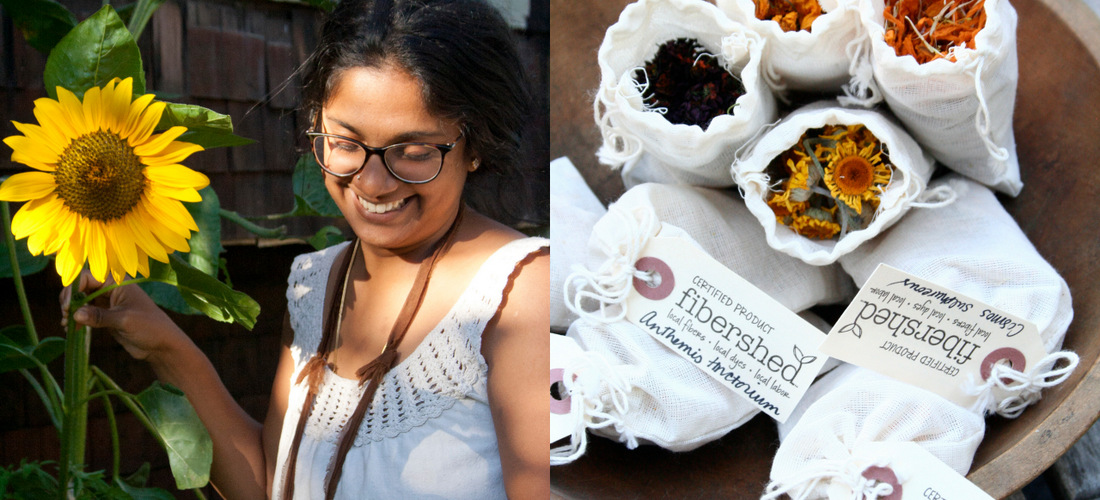It seems to be the case that once one opens themselves up to working with plants in any capacity, their learning never stops. Deepa Natarajan’s relationship with plants developed in many directions simultaneously. In following her curiosity, the many roads these plants have taken her down seem to be coming together again this summer as Deepa prepares to organize her knowledge and experience to share with others.
With a background in Medical Anthropology, Deepa spent her time in the university studying the many roles that plants have in the practice of treating and healing the human body. Through studying the ways people have cultivated and used plants as medicines throughout history, her understanding of human’s deep connection to, and dependence on plants, grew.
Deepa began to make connections between the Ayurvedic cloth dyeing process (a practice historically rooted in the Indian subcontinent, where fabric is dyed with specific plants to infuse fibers with the plant’s medicinal properties), Deepa began to reflect on the effect synthetic dyes can have on our bodies. Learning that the skin is the largest organ of the body, Deepa started to further research the connection between plants, their properties, and the potential they have to create color on fabric.
Deepa began working at the UC Botanical Garden at Berkeley in 2007 where she encountered a rich collection of plants, many of which can be used to dye fibers. It was here that she began working with the core group that puts on the annual Fiber and Dye festival every March. Her knowledge and experience with dye plants has since continued to grow exponentially. Years after her first introduction to the UC Botanical Garden and the depth of possibilities that the Bay Area climate offers for natural dyers, Deepa hopes to put together a book to teach others how to grow dye plants in this region.
Taken down many roads since the idea originated, including the path of becoming a mother and raising her first toddler, Deepa has decided to take the time this summer “to pause, reevaluate, relearn and understand better the seed to color cycle.” She is currently working with Helen Krayenhoff of West Oakland’s Kassenhoff Growers to systematically grow and document a wide variety of dye plants. “We need more information if we are going to tell people how to grow these plants. This summer is the time to refine our research.”
In her backyard, Deepa is growing a wide variety of perennial and annual plants, systematically recording the planting date, germination date, and time of first and last flowering, along with general notes on the plant’s growth and development patterns. She will be saving the seeds from these plants to offer to others who are interested in doing their own research growing the plants in different Bay Area soils and microclimates and to experiment with their dye properties at home.
These dye plants, interspersed with Deepa’s sugar cane and banana plants, are all thriving in Berkeley’s cool, yet sunny, summer climate. As she follows their development, she is learning how to make accommodations for even more productive growth in the coming year. She has new plans for protecting her 12 foot tall Hopi sunflowers from the rats who like to sneak up the stalks and eat the flower head, and will keep harvesting the Coreopsis, Dyer’s Chamomile, and Cosmos flowers to see if they stay productive into the fall.
Deepa’s ultimate interest lies in learning and sharing her knowledge. She offers consulting to designers and textile artists hoping to find the right dye combinations for their fabrics. She offers personalized classes to adults and children alike, and even organizes workshops for baby showers, teaching the group how to naturally dye ‘onesies’ for their newborns. From stocking seed lending libraries to designing and teaching workshops and skillshares across gardens and colleges in the Bay Area, Deepa brings a wealth of knowledge that she is open and ready to share and develop.






